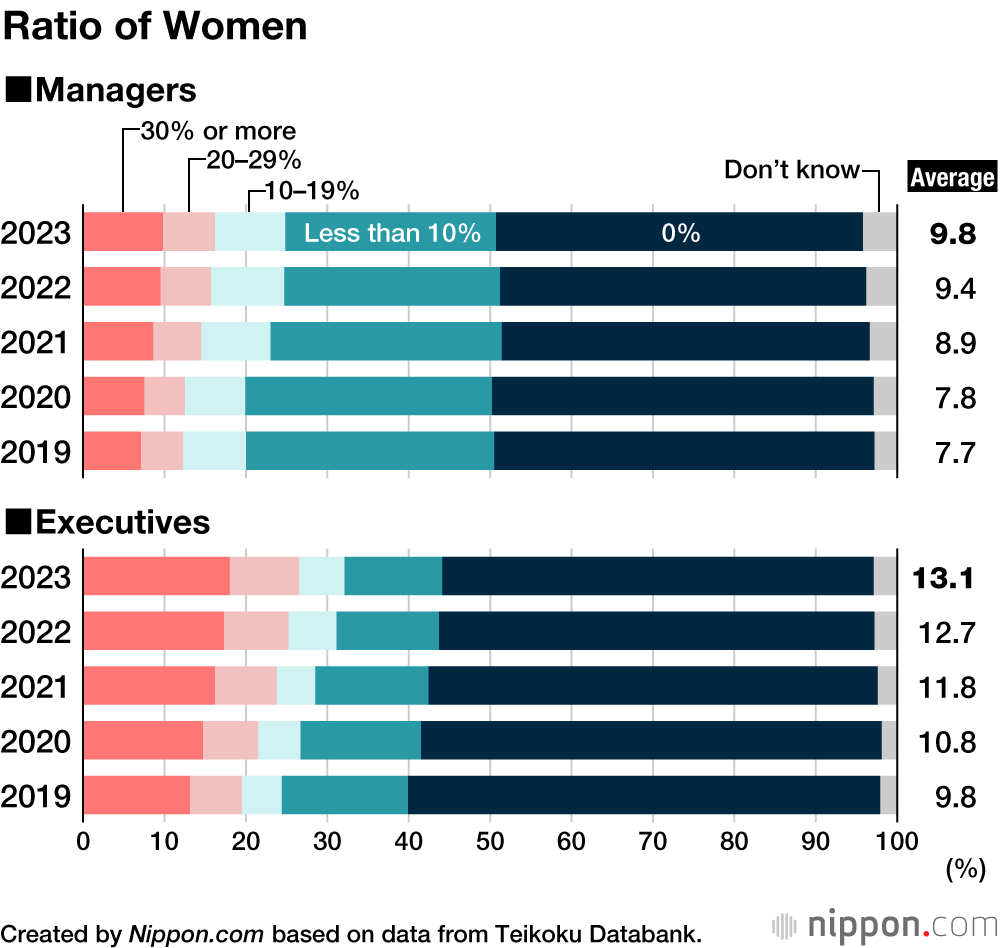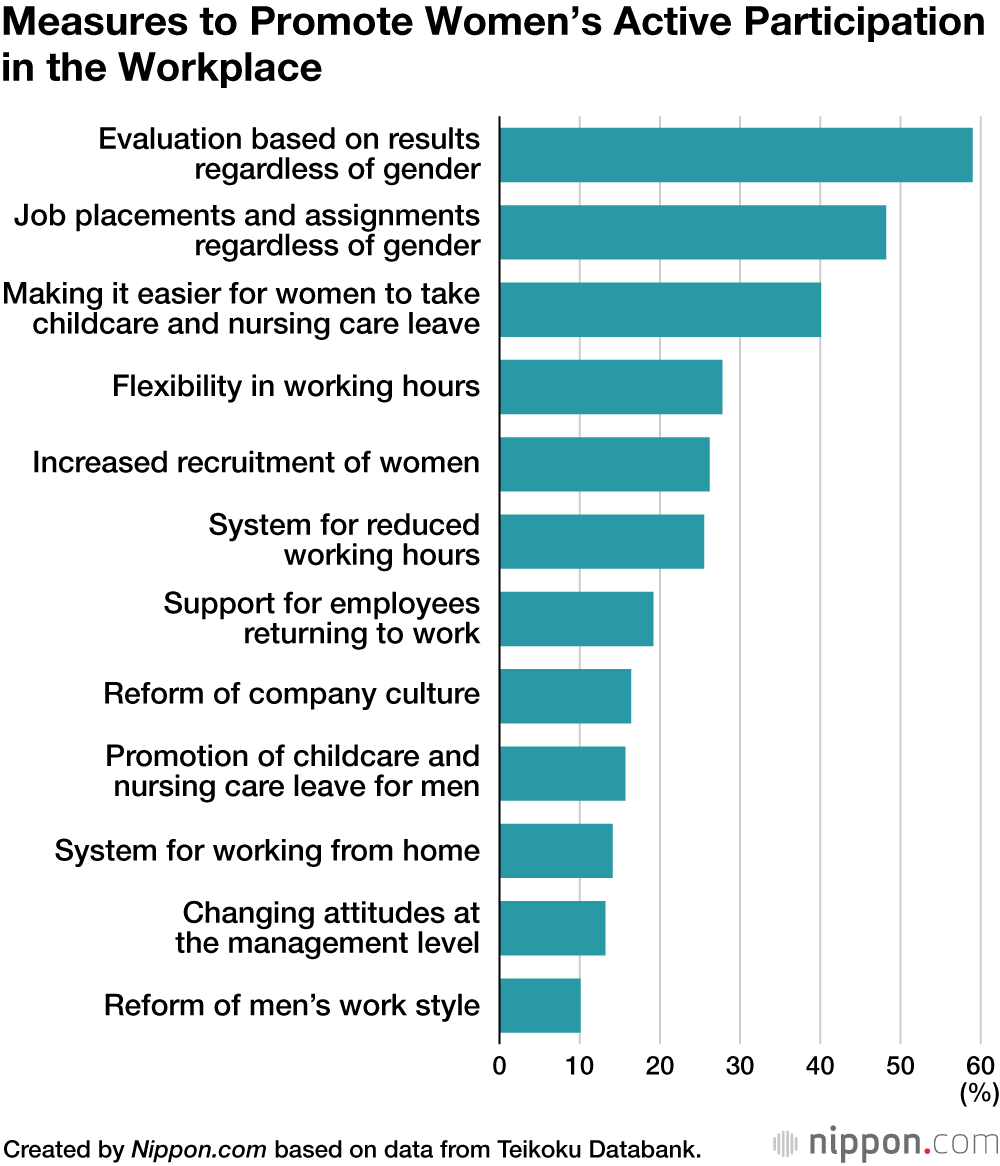
Ratio of Female Managers Creeps up to 9.8% in Japan
Work Society Gender and Sex- English
- 日本語
- 简体字
- 繁體字
- Français
- Español
- العربية
- Русский
A survey on the promotion of women in companies, conducted by Teikoku Databank in July 2023 and targeting 27,768 companies across Japan, revealed that the ratio of female managers had increased by 0.4 points from the previous year to 9.8%. This was the highest ratio since the survey began in 2013. However, companies where “all managers are men” were still most common at 45.1% overall and the government goal of having at least 30% of leadership positions held by women as soon as possible in the 2020s is still a long way off. Japan remained low in the Global Gender Gap Report ranking for 2023, at 125th out of 146 countries.
By company size, the highest ratio of female managers was at small-scale businesses with 12.6%, but the figure dropped as company size increased, with small and medium enterprises at 10.2% and large enterprises at 7.5%. By industry, retail, with a relatively large number of female employees, came out the highest at 18.6%, 8.8 points more than the overall average. Other top industries included real estate at 16.2%, services at 13.5%, and agriculture, forestry, and fisheries at 11.8%. In contrast, industries with fewer female employees, such as manufacturing, construction, and transportation/warehousing, all still had low ratios.
Concerning measures their companies were implementing to promote active participation by women in the workplace, 59.0% of respondents answered with “evaluation based on results regardless of gender.” Meanwhile, 48.2% said they were deciding “job placements and assignments regardless of gender” and 40.1% were “making it easier for women to take childcare and nursing care leave.” Around one in four companies were trying to help both male and female employees achieve a work-life balance, with 27.8% providing “flexibility in working hours” and 25.5% introducing a “system for reduced working hours.” Meanwhile, companies that were carrying out “promotion of childcare and nursing care leave for men,” a measure the government is particularly stressing, rose by 3.1 points to 15.7%.
(Translated from Japanese. Banner photo © Pixta.)


